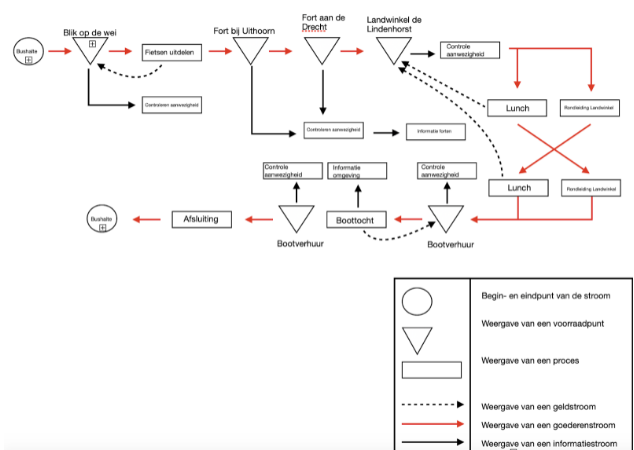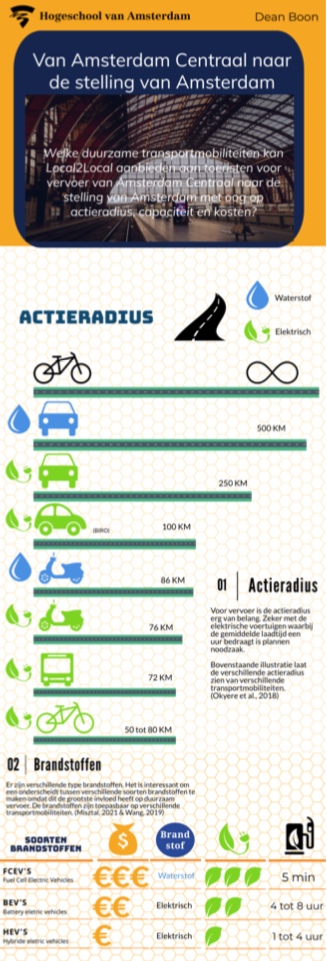Local2Local & HvA : Voedsel rond de Stelling research
In spring 2021, 12 Logistics Management students at the University of Applied Science Amsterdam (Hogeschool van Amsterdam) went to work for Amped to conduct research in support of Local2Local‘s role the Voedsel rond de Stelling-project. This research split into 3 topics and thus three groups:
Group 1: Analysis of farmers and producers around the Stelling van Amsterdam (Defence Line of Amsterdam)
Robin Hartman, Jany Fontijn, Robert Gjaltema and Youri Groot investigated which farmers and producers had potential for supplying products to the Defence Line forts and what the best distribution for this would be. In this research, it was important to carry out the distribution with as few miles and as few CO2 emissions as possible.

Result
In their advisory report for Local2Local, 53 potential suppliers were found around the Stelling van Amsterdam. The potential suppliers were found based on the criteria of the current suppliers. The suppliers are local and transparent to the customer. The products supplied by the different producers were examined, these products were found based on the desired assortment.
Six types of vehicles were compared for distribution. Here the diesel van and the electric van came out best. The diesel van is more cost-efficient and the electric van is more sustainable.
Group 2: Activating personnel
Stan Boer, Sander Dijkhoff, Vernon Janki and Aron de Jong called themselves ‘Logistics United’, because of their belief in working together: ‘United is everything to achieve’.
The assignment they grabbed together: design and plan a company excursion for employees on the Zuidas, in relation to the forts, farmers, nature and cultural heritage around the Defence Line of Amsterdam. The purpose of this excursion is to bring farmer and citizen into contact with each other, thus contributing to the shortening of the food chain.
They identified three objectives for this plan: 1) cost, 2) sustainability of transportation and 3) lead time.

Result|
Their management summary: “First of all they looked for a nice location near Amsterdam. This eventually became the village of De Hoef. Then we looked at activities. The activities had to be educational, but also bring a certain pleasure to the participants.
A bicycle route was chosen that passes two forts where an informative explanation will be given. As a lunch location Landwinkel de Lindenhorst was chosen. This is a very nice location, where the participants can see up close how things work on a farm. We also chose for a canal cruise with a delicious snack so the participants can see the area without having to watch the traffic themselves.
Once the activities were clear, an integrated logistics concept was created. This was used, among other things, to clarify the planning and lead time. In order to shorten the lead time, a Value Stream Map was created, showing the links where time could be gained. To determine the price of the excursion, surveys were sent out to find out what companies were willing to pay for this type of excursion. When transporting the participants, sustainability was of course also considered.
Because the participants are going to be split into two groups, two ground forms were also made. Here it has been clearly mapped out what the participants will be facing during the excursion. It was also explained for each link what the intention is here.”

Group 3: Personal mobility for food activities around the Defence Line
Jur Boer, Dean Boon, Thomas van Dijk and Jonathan Laseur mapped personal mobility between Amsterdam Central Station and the Defence Line of Amsterdam. They were also asked to advise on Local2Local’s question of how visitors can transport themselves from Amsterdam Centraal to the Defence Line as environmentally consciously and cheaply as possible, in light of the Evergreen events Local2Local plans to organize with its Amsterdam partners. The specific research question became:
How can visitors of the Defence Line of Amsterdam reach the forts with the lowest possible CO2 emissions and transportation costs, and which forts are suitable for events for up to 400 people?
Result
Their work produced a beautiful report, including impact analysis and the feasibility of different transportation methods.
Thank you for your great contributions, everyone! This research project was one of the building blocks of the rollout strategy of a robust, regional and regenerative food system in the Amsterdam Metropolitan Area!